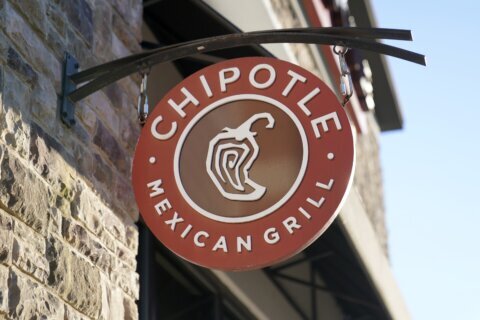D.C.’s mayor joined other leaders Monday in crediting public safety initiatives and community outreach with sinking violent and overall crime rates below pre-pandemic levels.
Violent crime is down by 35% compared to last year, according to data from D.C. police. It also showed an 11% decrease in property crime and a 15% drop in overall crime.
Mayor Muriel Bowser, D.C. Police Chief Pamela Smith and other local leaders praised efforts to fight crime, including the Secure D.C. legislation that passed earlier this year.
“We had gotten out of balance, particularly with accountability,” said Deputy Mayor for Public Safety and Justice Lindsey Appiah. “We worked very hard with the council, with stakeholders, with residents and businesses and others to propose common sense legislation that would help us to have immediate impact.”
While Smith said she was “pleased” with the decrease, she said the department will continue to fight crime.
“If one resident feels unsafe in our community, there’s still more work for us to do,” Smith said.
The recent decrease in D.C.’s violent and overall crime rates comes as cities around the U.S. are experiencing a similar trend.
Why did crime go down? Here’s what District leaders are saying
Crime prevention strategies: Officer visibility and community involvement
Many of the initiatives mentioned Monday were made possible by the passage of sweeping anticrime legislation under the Secure D.C. package last spring — which Bowser pointed to as a reason crime has dropped.
“The people who were carjacking our residents are being held when they weren’t before,” Bowser said. “And guess what? Carjackings are down almost 50%.”
More broadly, vehicle theft is down 25%.
The implementation of drug-free zones in crime hot spots also helped reduce crime, Bowser said.
A total of 89 drug-free zones were created, and 12 serious crimes happened in those zones, according to Smith.
“I think people were a little apprehensive about it initially, but now, more members of our community and residential members are asking for us to increase our presence for drug free zones across the city,” Smith said.
Officers have been out in the community with the hope of reducing homicides and violent crimes in the Rosedale, Anacostia and Washington Highlands areas. All three areas saw total violent crime drop, with a 41% decrease in Anacostia alone.
In what the chief said was an effort to better residents’ quality of life, officers also made themselves visible in areas where crimes such as traffic violations, permits and fraudulent plates were spiking.
“This visibility has disrupted offenders, causing us to focus on reducing speed, distracted driving, unregistered vehicles,” Smith said.
Bowser said investing in the community and calling on residents to report crimes has proved effective. She pointed to community events and local leadership’s involvement, such as Advisory Neighborhood Commissions and the Faith Advisory Council, as bringing in residents’ perspective.
Focusing on safety has paid off in business districts such as Chinatown, where overall criminal offenses have gone down by 47% since Feb. 12.
New rules on holdings and tech advances
Another effective method, Bowser said, was creating criminal penalties for organized retail theft as a stand-alone offense.
“What you saw here in D.C. even last year with respect to retail crime, theft and things like that was happening across the United States,” Smith said.
Bowser also mentioned how legislation has allowed more violent offenders to be held before being put on trial.
Leaders also gave a nod to technology, including boosting the number of CCTV cameras by 50.
“This network of cameras … is really critical to solving crime if it happens,” Bowser said.
Surveillance footage from those cameras can help the Real-Time Crime Centers find evidence on crimes.
Teens and children committing crimes
There’s also been a focus on making sure kids go to school.
“Making sure that our kids get to school, because we know that truancy is a big indicator for juvenile justice system involvement,” Appiah said.
The number of juveniles committing crimes has gone down, but the mayor said some youths are repeat offenders.
“In some cases, parents who have acted recklessly, we should connect them to responsibility for what their children do,” Bowser said.
Get breaking news and daily headlines delivered to your email inbox by signing up here.
© 2024 WTOP. All Rights Reserved. This website is not intended for users located within the European Economic Area.








